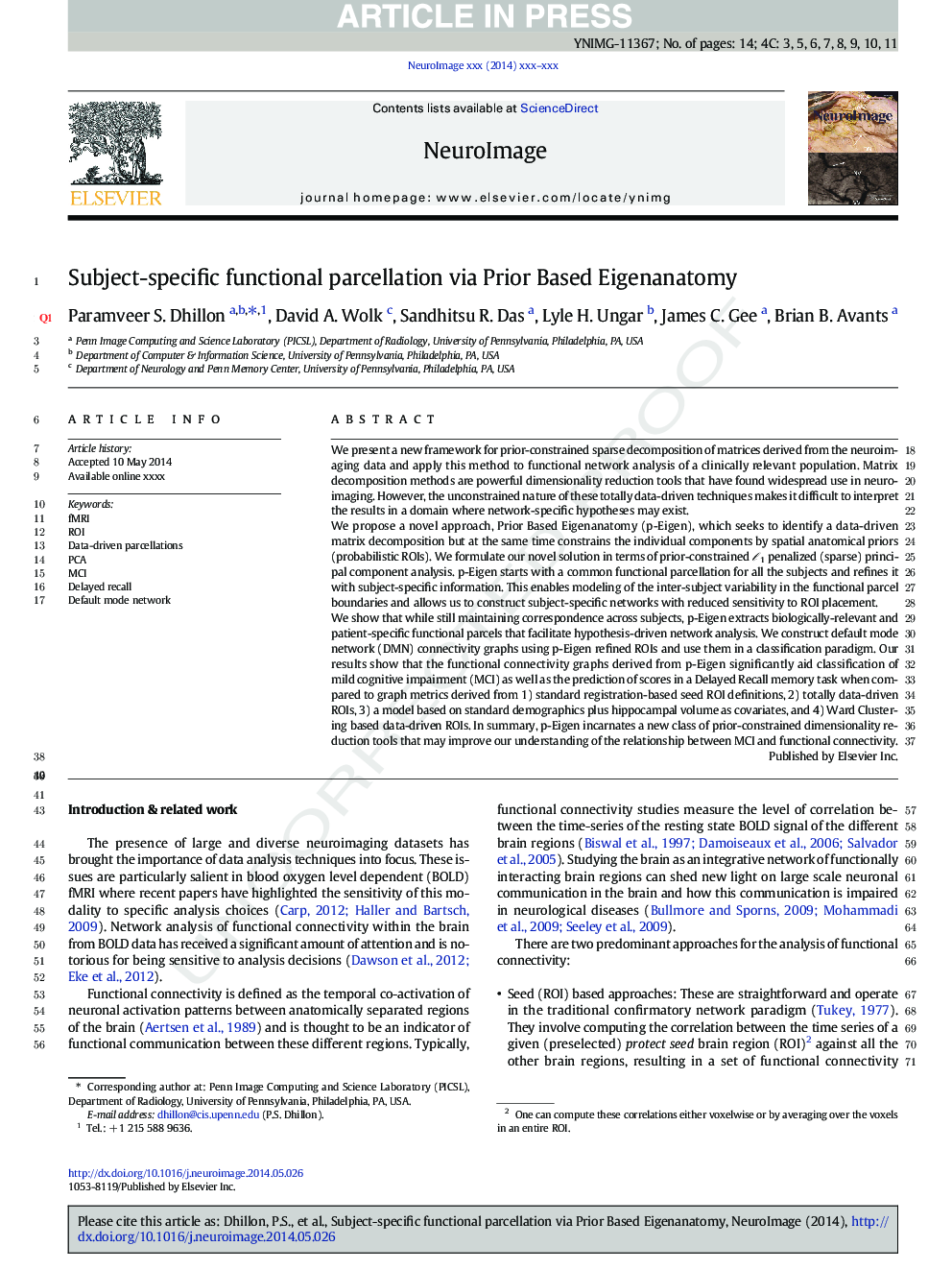| Article ID | Journal | Published Year | Pages | File Type |
|---|---|---|---|---|
| 6027041 | NeuroImage | 2014 | 14 Pages |
Abstract
We show that while still maintaining correspondence across subjects, p-Eigen extracts biologically-relevant and patient-specific functional parcels that facilitate hypothesis-driven network analysis. We construct default mode network (DMN) connectivity graphs using p-Eigen refined ROIs and use them in a classification paradigm. Our results show that the functional connectivity graphs derived from p-Eigen significantly aid classification of mild cognitive impairment (MCI) as well as the prediction of scores in a Delayed Recall memory task when compared to graph metrics derived from 1) standard registration-based seed ROI definitions, 2) totally data-driven ROIs, 3) a model based on standard demographics plus hippocampal volume as covariates, and 4) Ward Clustering based data-driven ROIs. In summary, p-Eigen incarnates a new class of prior-constrained dimensionality reduction tools that may improve our understanding of the relationship between MCI and functional connectivity.
Related Topics
Life Sciences
Neuroscience
Cognitive Neuroscience
Authors
Paramveer S. Dhillon, David A. Wolk, Sandhitsu R. Das, Lyle H. Ungar, James C. Gee, Brian B. Avants,
